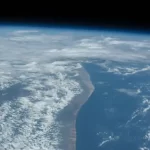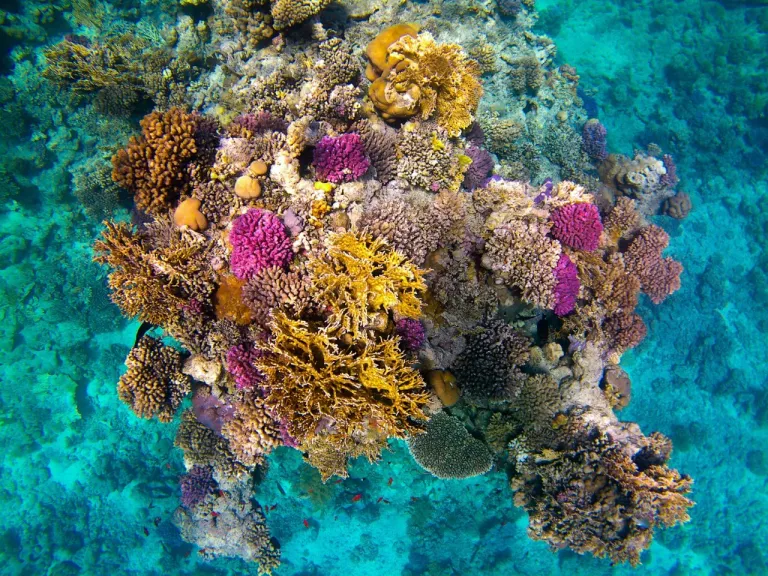A large new marine protected area could help some of the world’s most heat-tolerant corals survive the century, if it facilitates pressures from resorts, industry and other development.
When Lina Shalita, environment coordinator at the Ministry of Tourism’s Chamber of Diving Tourism and Marine Activities, dives along Egypt’s Red Sea coast, she sees not only a colorful array of coral reefs and fish, she sees hope, against a grim backdrop of climate models indicating most reefs are dead. corals by the end of this century in very warm oceans.
The northern end of the Red Sea could end up being one of the last places on Earth where these biospheric ecosystems can survive, at least for a while, and maybe even longer if the nations of the world can curb global warming and stabilize the climate. .
The coral reefs in the northern Red Sea could show scientists how some other reefs can adapt to global warming, and may also act as a nursery for corals to restore corals in other regions.
A recent proposal to create a vast new marine protected area that includes coral reefs in the Red Sea could be a step toward ensuring their survival and potentially spreading the hope growing there to other coral ecosystems.
“What is needed is appropriate integrated management plans for coastal zones that are implemented,” Bob Berwin, an Austrian journalist at insideclimatenews, quotes Lina Shallita, as she monitors the coastal coral reef area near Sharm el-Sheikh, where the most recent UN climate summit was held last November. Considering all stakeholders, from oil and gas to the shipping industry, to fishing, tourism and coastal development, and trying to find a good mediator between all of these, with priority on protecting as many of these reefs as we can.”
Reducing impacts on coral reefs
Shalita, has been diving in the area for 17 years and promotes Greenfin, a reef protection program focused on reducing impacts on coral reefs from recreational diving and snorkeling.
Shalita said she has seen coral reefs and fish stocks decline, but said they are still in good shape compared to other reefs ravaged by recent ocean heat waves, and a protection plan that mitigate current impacts and prevent new ones should keep them that way for a few decades. Another, she added, “I know she has the potential to recover, if we allow her to.”
But she warned that this must happen within about five years, as she expects the climate to reach 1.5 degrees of warming in 2030, and the capacity of coral reefs must be strengthened as much as possible before this increase in heat arrives.
Four times faster than the average rate
Time is of the essence because the northern Red Sea is warming about 0.45 degrees Celsius per decade — four times faster than the average rate of ocean warming — according to a 2017 study in the journal Scientific Reports. Mark Eakin, former director of the National Trust, said that because coral reefs in the area are found in very shallow waters, and so close to shore, they are vulnerable to both a warming ocean and the impacts of activities on land, including sediment runoff and pollution.
Coral reef monitoring program of the National Oceanic and Atmospheric Administration.
Marine biologist at the University of Suez Mahmoud Hanafi, who is also a member of the Environmental Protection Society in Hurghada, told insideclimat that, so far, ocean heat, which kills coral reefs by bleaching — a disturbance in the symbiotic relationships between the different microorganisms that make up Among them – in the coral reefs in the northern Red Sea, and he added, “We have more than 50 scientific articles that provide very clear evidence that the Egyptian coral reefs could be one of the last refuges for coral reefs around the world until the end of this century.”
Red Sea Initiative
Building on these findings, global conservation groups focused on ocean ecosystems recently identified the Red Sea coral reefs as a global “spot of hope.” Just ahead of COP27, recent climate talks in Egypt, Mission Blue and The Ocean Agency have ramped up a push to create protections. wider coral reefs, and the United States contributed $15 million to launch the Red Sea Initiative “to help protect coral reefs and the surrounding coastal ecosystem against the effects of climate change and human activity.”
The Red Sea Initiative is a key component of the bilateral agreement between the United States and Egypt on economic cooperation, and aims to establish a “long-term, private sector-led approach to the preservation and restoration of coral reefs in the Red Sea,” according to the US and State Department.
“We found that until the end of the century, the sea in this region will not reach a temperature that would cause bleaching,” Hanafi said. “Protecting coral reefs is not our national task, it is a global task. This is the last resort, the hope for future generations.”
Red Sea reefs can tolerate heat, however
But time may be running out. Some research indicates “decreased coral growth and calcification across the thermal range of Red Sea corals.” There was widespread bleaching in the central Red Sea during 2015, a year in which 70 percent of corals globally were exposed to corals. Warm ocean temperatures that may be harmful.
Surveys after eight months of bleaching showed “an overall decrease in coral cover and coral richness”.












